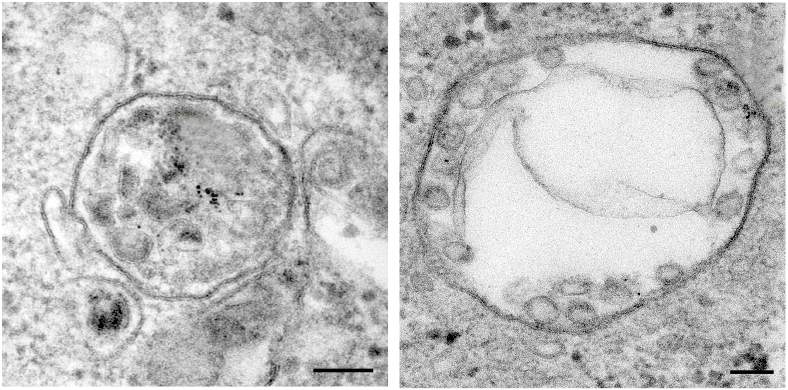Prof. David Wallach and his group reveal a protein that can kill a cell or save it

A good legal system will have safeguards against administering capital punishment by mistake. The human body, too, has mechanisms to ensure that its cells are not executed mistakenly; researchers at the Weizmann Institute of Science have discovered a new way that cells avoid unnecessary death.
Prof. David Wallach and his colleagues in Weizmann’s Biomolecular Sciences Department have discovered that the same molecular signal that triggers a form of cellular death called necroptosis also enhances a restrictive response that helps the cell resist the lethal message. In this sense, necroptosis commands resemble the verdicts of Sanhedrin, the Jewish supreme court in Israel of the Roman period. Wallach: “The Sanhedrin reportedly went to great lengths to avoid mistakes in sentencing people to death, making it possible to re-evaluate a death verdict up to five times, even if doubt arose while the accused was being led to execution.”
It applies its own housekeeping function to itself, helping to create vesicles that will ultimately escort it outside the cell
Necroptosis was identified relatively recently and has been studied in-depth only in the past ten years or so. Until then, scientists distinguished between two major classes of death: necrosis, in which the cell’s membrane is perforated, and apoptosis, in which this membrane remains intact. Initially, only apoptosis was known to be orderly and programmed, but then scientists discovered that necrosis, too, can sometimes occur in this manner. Necroptosis is the most extensively studied form of such programmed necrosis.
This type of cellular death plays an essential role in defending the body against viral infection. It also occurs in such conditions as stroke, heart attack and Crohn’s disease. Therefore, clarifying how necroptosis is regulated is of major importance for understanding, diagnosing and treating numerous common diseases.
A last-minute reprieve
The very last command in the chain of molecular steps leading to necroptosis is delivered by the protein called MLKL. After being activated, this protein kills the cell by making holes in its membrane, causing the cellular contents to spill out and spreading inflammation to surrounding tissues. This step was previously considered a point of no return. But, as reported recently in Immunity, the Weizmann researchers discovered that the death verdict can be cancelled even at this late stage. Just when the death command increases, an anti-death mechanism kicks in, causing much of the MLKL to become enclosed in tiny vesicles called exosomes (balloon-like organelles confined by a membrane) and be expelled from the cell.
“In fact, the MLKL is a self-restricting killer,” says Wallach, who conducted the study with Drs. Seongmin Yoon, Andrew Kovalenko and Konstantin Bogdanov. “The MLKL death command has opposing effects on the cell – on the one hand leading to cellular death, while on the other hand increasing cellular resistance to the killing. This mechanism is one of the safeguards that make sure body cells are not killed without a valid reason. The cells die only if the death command exceeds a certain threshold and overcomes resistance to death.”
The scientists have also discovered that like many other proteins, MLKL is a “moonlighter” that holds more than one job in the cell. Killing the cell is its “night job,” whereas its major function is a non-deadly, housekeeping task: facilitating the transport of various molecules that are slated either for destruction or for expulsion. When the MLKL is primed for killing, it applies its own housekeeping function to itself, helping to create vesicles that will ultimately escort it outside the cell.

By further clarifying the distinction between MLKL’s two jobs, it may be possible in the future to design drugs that will block its deadly function without interfering with its housekeeping. In addition, the presence of increased amounts of MLKL within vesicles released outside the cell may hold the key to monitoring or diagnosing diseases characterized by necroptosis: By recovering these vesicles from blood tests and assessing their MLKL content, it might be possible to establish whether necroptosis is underway somewhere in the body and perhaps even determine in which tissues the disease process is taking place.

Recent Comments